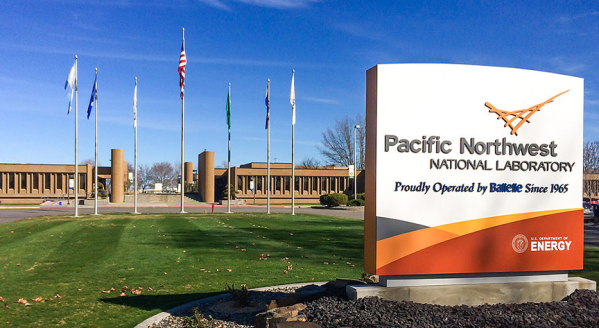How the DOD plans to approach cloud differently outside of the U.S.

The Department of Defense wants cloud computing to support everything from back-office tasks to battlefield operations. But how it gets cloud in regions outside of the continental U.S. comes with significant extra barriers.
The DOD’s process for addressing those barriers was outlined in a new strategy published in May. The department shed new light to FedScoop on how exactly it will execute the technical and resource-intensive hurdles involved in getting cloud at the so-called “tactical edge.”
“Cloud computing can help solve today’s national defense challenges, but its true potential is to solve tomorrow’s challenges,” the strategy states. “Collaboration across these domains, increasingly enabled by high-tech, software-driven solutions, must occur at the global point of need, at the tactical edge, and at the fight.”
The department wants more cloud and data storage capabilities in areas it operates to enable multi-domain operations: the ability to transmit data between airplanes, ground vehicles and any other platforms in battle, which will rely on the ability to expand networks with cloud storage capabilities to turn that data into actionable information. By having cloud computing capabilities in the field, military operations have more of a technical backbone to support that kind of rapid data transfer and the computing power to analyze that data.
Physical challenges
The harsh environments the military often operates in present a range of challenges for the computers that often need carefully controlled setups. One solution the DOD says it is pursuing smaller, less-power hungry machines.
“OCONUS Cloud Strategy acknowledges that space and power is limited because the locations will be hosted in U.S.-controlled military locations that are treated as U.S. soil. This approach is necessary to avoid all data sovereignty issues with a host nation,” a DOD spokesperson told FedScoop.
The hardware that forms the computing backbone also needs to be mobile as DOD is constantly shifting its operations.
“The rapid pace of advances in mobile cloud compute capabilities creates the belief that a mobile cloud could be managed like any other set of forward-deployed resources, such as planes, ships, or infantry battalions,” the spokesperson said.
Not only does the physical hardware need to be mobile, but the elasticity of data processing is critical. With unsuspecting surges in data possible in an environment where the military would need to respond rapidly, the ability for the systems the expand to meet the demand is one of the benefits of cloud that the military wants to take advantage of.
“Similarly, the data capacity needs will be very elastic and linked to mission objectives. One of the core values of the commercial cloud is that it has freed commercial enterprises from having to plan for and purchase against the largest but, isolated compute surges. Building on the above, as mission demands expand, and more resources are deployed in-theater, a planned expansion of data and compute capacity can accompany those units,” the DOD spokesperson said.
Cybersecurity challenges
Cybersecurity is also complicated when cloud hardware is outside the borders of the U.S. DOD regulations require sensitive data to be kept on U.S. soil as foreign internet connections and easier access to hardware presents a ripe target for attackers. But the solution, DOD says, will be similar to how the department wants to protect its networks and cloud capabilities inside the U.S.
“The principles and pillars of the Department’s zero-trust strategy and reference architecture will guide the implementation of all Cloud-based services deployed by the Department regardless of physical location. This applies to both CONUS and OCONUS deployed assets,” the spokesperson said.
Zero trust is a network architecture based on the principle that every user is granted “zero” trust and not given free roam to move about a network just because they have credentials. That framework is designed to segment networks to stop attackers that make it past the first line of defense, whether it’s inside or outside of the U.S.
All of the challenges OCONUS cloud operations face are also being met with human resources. The DOD plans to deploy teams of cloud engineers and experts into the field to set up and run the unique technology.
“As an illustration, instead of transporting hard drives back to the CONUS for processing because of bandwidth limitations, the strategy calls for deploying research teams to explore novel ways to process this data closer to the tactical edge. These focused research and development efforts are intended to lead to capability advancements that very well may necessitate a faster tech-refresh cycle,” the spokesperson said.
This story is part of FedScoop’s Special Report — The Continued Push to the Cloud.
This story was featured in FedScoop Special Report: The Continued Push to The Cloud - A FedScoop Special Report






